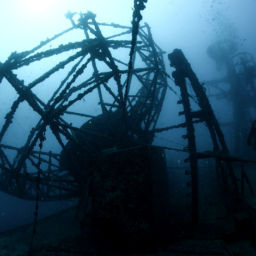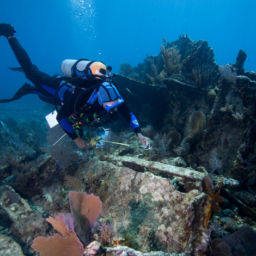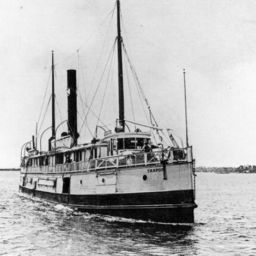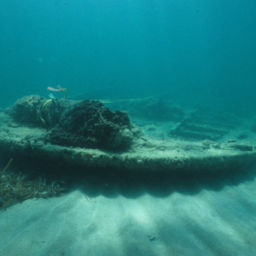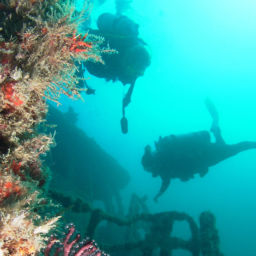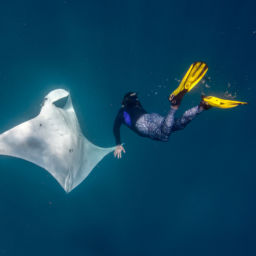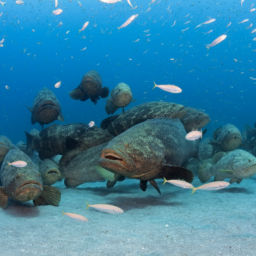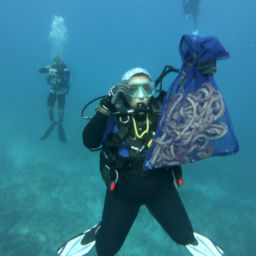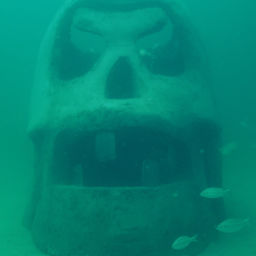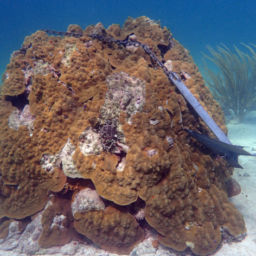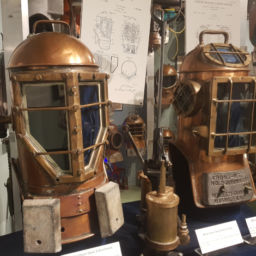There are 12 Underwater Archaeological Preserves in Florida, scattered from the northwestern Panhandle down to the Florida Keys. Today we visit the Lofthus.
History of the Lofthus
Built at the T.R. Oswald shipyard in Sunderland, England in 1868, the iron-hulled sailing bark Cashmere was at the forefront of a new technology — metal hulls. With Britain’s industrialization, it became economical to produce iron hulls. Compared to wood, iron was light and durable, and it also provided the strength needed for larger ships. Eventually, steel replaced iron. This is because while iron is rigid, it is also comparatively brittle. Cashmere had an especially thick hull and was rigged as a bark — a sailing vessel with the fore and main masts rigged square, and the aft mast, or mizzen, rigged fore-and-aft like a schooner.
Built for long-distance maritime trade, it was more than 222 feet (68 m) long and had two decks. In its early career, Cashmere plied the lucrative waters of the East Indies for the Liverpool Shipping Company. As there was much piracy in the area, the ship’s owners painted false gun ports on the hull.
A Norwegian firm purchased the bark in 1897 and renamed it Lofthus. From the port of Lillesand, south of Oslo, the bark began shipping operations in the Americas. But Lofthus’ new career would not last long. On its final voyage, the ship took on lumber at Pensacola. On the way to Buenos Aires, Argentina, an unseasonable current pushed the bark off course and on February 4, 1898, it wrecked off Manalapan, Florida in a storm. The vessel was a total loss, but the captain and entire crew survived, although not without mishap. Rough seas turned the rescue boat back several times, eventually prompting the crew to don life preservers and escape to shore. Lofthus was sold, stripped down, and months later, its hull was dynamited to access what was left of the valuable wooden cargo.
Shipwreck as a preserve
Recognizing its importance to maritime history, the Marine Archaeological Council, an avocational archaeology group, nominated Lofthus to be an Underwater Archaeological Preserve. Avocational and state archaeologists worked closely together to unearth the vessel’s story from newspapers, letters, and archives in both England and Norway. Lofthus was dedicated as one of Florida’s Underwater Archaeological Preserves in 2003 and listed on the National Register of Historic Places in 2004.
Diving the Lofthus
Sand cover changes dramatically at the site, so each visitor’s experience will be different. You’ll find Lofthus’ bow to the northeast. In the center of the wreck, a bronze memorial plaque set in a concrete monument dedicates the site as one of Florida’s Underwater Archaeological Preserves. From the center to the southwest, divers will see various components of 19th-century iron ship construction: beams that supported the hold and upper deck, frames that gave shape to the hull, hull plating and fragments of its three masts.
The site is alive with marine plants and animals, in stark contrast to the sandy seafloor nearby. Marine growth covers the iron surfaces, and a rich variety of fish school around the structure. Cowfish, scorpionfish, spiny lobster, porcupinefish, sergeant majors and stingrays are common.
Lofthus is in a dynamic sandy environment, in 15 to 20 feet (4.5 to 6 m) of water, ¾-mile north of Boynton Inlet, 175 yards offshore. Please use a divers-down flag when visiting the site.
Remember, Florida’s historic shipwreck sites are protected by law. Souvenir hunting is prohibited. Please take only photos and leave only bubbles. To learn more about Lofthus, or any of Florida’s twelve Underwater Archaeological Preserves visit museumsinthesea.com.
By guest author Franklin H. Price








